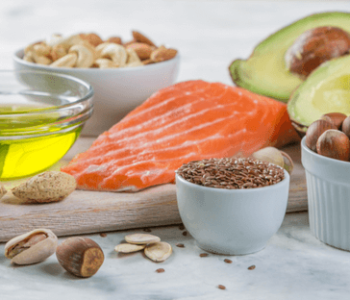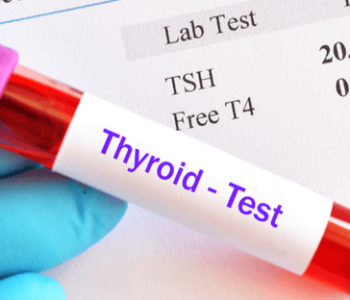In 30 seconds…
The best way to maintain a healthy gut is to eat well, and doing so can be super easy. Recipes should include prebiotics like onions, garlic, oats and bananas, and probiotics like yoghurt, kimchi and kombucha. A small change to your diet can make all the difference.
Supporting a Healthy Gut
Your gut is one of the most important systems in your body. Contributing to your mood and mental health, your skin health and immune system, as well as your energy levels and nutrition, it does a lot of work – and often doesn’t receive the respect it deserves.
Eating well is crucial for maintaining a healthy gut. And while our habits and daily rhythms don’t always make healthy eating a priority, your gut would appreciate a bit of care.
Ultimately, it doesn’t take much – and if you’re doing what you can, that’s good enough. Here, we share five gut health recipes (and a week’s worth of breakfasts) to ensure your digestive health gets all the support it needs.
What Should You Eat for Gut Health?
Gut health begins with a well-balanced microbiome. Your gut microbiome is the collection of all the different bacteria – good bacteria and bad bacteria – in your gut. This needs to stay balanced, so your digestion works as it should, and so you avoid the symptoms associated with conditions like irritable bowel syndrome (IBS).
How to do that? One of the most popular ways is to ensure you consume enough probiotics and prebiotics:
- Probiotics. These are live bacteria that you consume through food or supplements. They’re good gut bacteria that contribute directly to the health of your microbiome. You’ll find them in fermented foods, including:
- Yoghurt
- Tempeh or miso (fermented soybeans)
- Kimchi
- Kefir
- Sauerkraut
- Prebiotics. If probiotics are the bacteria, prebiotics are their food. They’re plant fibres that act as fuel and nutrition for your gut microbiome. You can find these in:
- Onions, garlic, and leeks
- Asparagus
- Banana
- Dried fruits, including dates and figs
- Barley, oats, and rye
- Legumes, including chickpeas, lentils, soybeans, and kidney beans
The great thing about prebiotic foods is that they contain fibres important for your gut bacteria. But they also provide an essential source of dietary fibre or roughage that ensures healthy bowel movements, as well as many crucial vitamins and nutrients you need for your overall wellbeing.
Find out more: Probiotics vs Prebiotics: What’s the Difference?
What Else Can Help a Healthy Gut?
Alongside prebiotics and probiotics, other food groups can help support gut health. These include:
- Polyphenols: These are a type of plant compound that may support digestive health. Find them in olive oil, red wine, berries, and dark chocolate. These appear to help support probiotics while offering anti-inflammatory and antioxidant health benefits.
- Fibre: Your gut microbiome aside, your digestion needs dietary fibre or roughage to prevent constipation and ensure everything works as it should. Fibres can be sourced from fruit, nuts, veg, and cereals and grains.
- Omega-3: Oily fish, such as salmon, mackerel, and sardines, have been found to be a vital contributor to gut health too. It’s not all about your probiotics. People with higher blood levels of omega-3 – the fatty acid found in fish – had higher levels of good bacteria too.
Heads up: You can get all the omega-3 you need in Manual’s Omega-3 Extra supplements.
Meal Suggestions to Support a Healthy Gut
So, what are some recipes for a healthy gut? Here are some breakfasts and dinners that can get you through a week of optimum gut health.
Note: A healthy gut – and overall wellbeing – comes from making food choices you can sustain. Meanwhile, you can learn some tips on how to improve gut health here.
Breakfasts for a Healthy Gut
Eating healthy doesn’t have to be a struggle – or an unpleasant experience. Gut health recipes for breakfasts can be simple, delicious, and filling. Try some of the following:
- Yoghurt and chopped banana: A simple combo of probiotic yoghurt and prebiotic fruit.
- Porridge with dried fruits and nuts: Oats are great prebiotics, and fruits and nuts too.
- Asparagus and a fried egg: Steamed asparagus tossed in a pan with some garlic, chilli, and oil makes for a fantastic prebiotic brunch – with an egg to pull the dish together. Kimchi is excellent with eggs if you want to add a probiotic to the plate.
- Kefir and berry smoothie: Kefir is a type of probiotic fermented milk. You can use it like yoghurt or just drink it as it is. It’s pretty good whizzed with strawberries, blueberries, and banana – or all three.
- Avocado on sourdough: The hipster’s favourite. Both ingredients are rich in prebiotics. Sauerkraut makes a great addition.
- Simple cereal and juice: Fruits are high in fibres, which are great for your digestion. Cereals or granolas – made of oats, barley, or rye – are all great prebiotic sources. If you need them, gluten-free cereals are available too.
- Smoked salmon and poached eggs on sourdough: Salmon is an excellent source of omega-3, a nutrient that supports your gut bacteria. You can happily leave the egg out if you prefer.
5 Gut Health Recipes
Now for some gut-friendly recipes to get you through the rest of your day. All measurements are for two!
Salmon and lentils
It’s a simple, delicious recipe that combines the goodness of oily fish with the prebiotic and fibrous quality of lentils.
What you’ll need:
- 2 salmon fillets
- A can of green lentils
- 2 teaspoons of curry powder (or combined spices such as garam masala, cumin, and ground coriander)
- 2 handfuls of spinach
- Olive oil
- Lemon
What you need to do:
- Empty the can of green lentils into a shallow pan with a lid, along with about 100 ml of water. Mix in the spices.
- When the lentils are bubbling, place the salmon on top. Cover the pan and let the salmon steam for about 8 minutes, until cooked through.
- While the salmon cooks, mix the juice of the lemon with 2 tablespoons of olive oil.
- Remove the salmon from the pan and stir the spinach into the lentils.
- Serve lentils onto a plate and place the salmon on top. Dress with the lemon and oil dressing.
Easy falafel with kefir
Falafel is a Middle Eastern dish made with chickpeas, a great prebiotic food. Eaten with kefir or yoghurt and a green salad, it makes a tasty and easy dish.
What you’ll need:
- A can of chickpeas
- 1 spring onion
- 1 clove garlic
- ½ tsp ground cumin
- ½ tsp ground coriander
- A handful of fresh coriander or parsley
- Sesame seeds
- Olive oil
- Yoghurt or kefir (store-bought)
- Green lettuce
What you need to do:
- Drain and rinse the chickpeas, roughly chop the spring onion and coriander, and peel the garlic.
- Toss them all into a blender with the spices and seasoning.
- From the blended mix, form six flattish balls with your hands, about 5cm wide. Sprinkle them with sesame seeds.
- Now, you can either cook them in the oven or shallow fry them in a pan. Place them on a baking tray and dribble olive oil on top, then place in an oven at 200 degrees until they are brown. Alternatively, heat oil in a frying pan and cook until browned, flipping once.
- Serve with yoghurt and green lettuce.
Sweet potato and tempeh bubble and squeak
It’s a winner because it’s infinitely adaptable, easy, and full of goodness. Try to keep the tempeh for its probiotic qualities, but feel free to swap out the sweet potatoes for regular potatoes and the kale for another green such as chard.
What you’ll need:
- 1 onion
- 2 medium sweet potatoes
- 100 grams of kale (chopped)
- 200-gram block of tempeh
- 1tsp turmeric
- 1tsp paprika
- 1 tbsp olive oil
- Bacon or fried egg (to serve)
What you need to do:
- Chop the sweet potatoes into 2cm cubes and cook in the oven until you can stab through with a fork (usually about 25 minutes at 180 degrees).
- While the potato cooks, finely chop an onion and cook it in the olive oil in a frying pan for about 8 minutes.
- Chop the tempeh into 2cm cubes and fry them with the onions for about 5 or 6 minutes, until brown.
- Add the baked sweet potato to the tempeh, along with the spices and the kale. Add a small cup of water and cover.
- When the kale is wilted, season and serve. It’s particularly good with grilled bacon or a fried egg.
Sauerkraut soup
The word sauerkraut doesn’t have the most welcoming sound. But it’s a superfood that boasts serious probiotic qualities. This dish does it German-style with lots of flavourful ingredients.
What you’ll need:
- 50 grams of bacon
- 1 white onion
- 1 garlic clove
- ½ litre of stock (chicken or veg!)
- 250 grams of sauerkraut
- Tomato puree
- Herbs and spices: smoked paprika, dried marjoram
- 2 big dollops of crème fraiche (to serve)
What you need to do:
- Dice the bacon, chop the onion, and crush the garlic.
- Fry the bacon in a big pot, and when cooked, add the onion.
- When the onion has softened (about 8 minutes), add the garlic – then the tomato puree and herbs and spices.
- Add the sauerkraut and the stock and gently boil for 20 minutes.
- Season to taste and serve with a dollop of crème fraiche and some crusty bread.
Easy kimchi fried rice (and a side of salad)
It’s a simple Korean stir-fry that’s full of flavour and great for the gut. Swap out the butter for oil if you want to do it a little lighter – and the meat is totally optional (although an excellent addition!).
What you’ll need:
- 20g of butter
- Half an onion
- 150 grams of kimchi (with liquid)
- Ham or other cooked meat
- 150 grams of rice
- 2 tsp soy sauce
- 2 eggs
For the salad:
- Green lettuce
- Mixed seeds, including chia, sunflower, pumpkin
- Walnuts
- Olive oil
What you need to do:
- Boil the rice until cooked. Set aside to cool.
- Heat the butter in a non-stick pan and add the finely chopped onion.
- After a couple of minutes, add the kimchi with its liquid.
- When the kimchi starts to bubble, add the diced meat.
- Drain the rice and add it to the pan. It should absorb all the juices. At this point, add the soy sauce to taste.
- Cook until the rice is lightly browned.
- In another pan, fry two eggs.
- Serve the kimchi rice in a bowl per person, each topped with an egg. Serve it with a salad of green lettuce, sunflower seeds and walnuts, or some boiled veggies.
Key Takeaways
Gut health recipes give your body all the goodness you need to ensure your microbiome is as healthy as it can be. Ideally, they should include a combination of probiotic foods – the foods that deliver good bacteria straight to your gut – and prebiotics, the fibres that feed those bacteria.
Equipped with the knowledge of what foods are great for your gut, you can rustle up your own gut health recipes too!
FAQs
What does your gut do?
The health of your gut is incredibly important, a healthy gut improves your mood and mental health, your skin health, immune system, energy levels and nutrition.
How do I maintain a healthy gut?
Your gut is a microbiome – like a mini ecosystem of good and bad bacteria; to maintain a healthy gut, you have to maintain a healthy balance between these various types of bacteria. The best way to maintain a healthy gut is to eat well, and include plenty of pre- and probiotics in your diet.
What are probiotics and prebiotics?
Probiotics are live, healthy bacteria found in fermented foods like yoghurt, soybeans, tempeh, and kimchi. Prebiotics are the plant fibres which probiotics feed on, and can be found in foods like onions, garlic, leeks, asparagus, bananas, barley, oats, dried fruits and legumes.
What other things help promote a healthy gut?
Beside prebiotics and probiotics, you can maintain a healthy gut by including in your diet polyphenols (find them in olive oil, red wine, berries, and dark chocolate), fibre, and Omega-3 fatty acid (found in fish oil).












